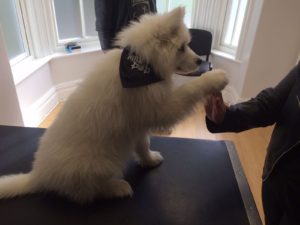Each May we celebrate Veterinary Nursing Awareness Month (VNAM). This gives us a chance to explain the importance of the veterinary nurse in practice and the provision of responsible pet care. Outside of the consulting room, a lot of the attention and medical care your pet receives is from the veterinary nurses.
The title ‘Veterinary Nurse’ is not yet protected in law so anyone can use it, however it is recommended by the Royal College of Veterinary Surgeons (RCVS) that it should be taken to mean only Registered Veterinary Nurses (RVNs). There are a variety of different routes you can take to become an RVN but we have all undertaken a rigorous training programme, sat examinations, and are subject to a Code of Conduct. Even after we have completed our course and become an RVN we continue to study and log professional development hours to maintain our Registration. Some RVNs also undertake specialist training in a number of different areas such as emergency and critical care, feline medicine, anaesthesia and exotic pets.
Here at Hollybank we have four RVNs, Cat, Leonie, Aimee and Alicia. We also have two Student Veterinary Nurses (SVNs) Katie and Claire, who are carrying out their placement year with us.
We all love our job and think it is important we share with the public what the nursing role entails. We will be giving you an insight into what it takes to be an RVN, some of the things we do from day to day and additional qualifications that are available. Throughout May each of us will be posting different information pieces on our website so keep an eye out every week and celebrate VNAM with us!
The Nurse Roles; A-Z
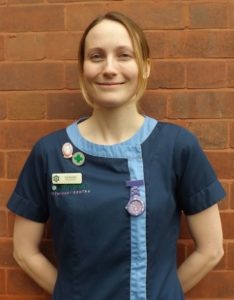 Anaesthetist – it is the RVNs responsibility to prepare our patients for surgery and monitor their anaesthetic; recording their vital signs and keeping the vet informed.
Anaesthetist – it is the RVNs responsibility to prepare our patients for surgery and monitor their anaesthetic; recording their vital signs and keeping the vet informed.
Behaviourist – we often give out behaviour advice especially in our puppy and kitten clubs for problems such as toilet training, nipping puppies and car travel.
Cleaner – hygiene is extremely important in a veterinary practice, nurses ensure everywhere is clean and tidy after operations, during each animals stay in the hospital, between consultations and at the end of every day.
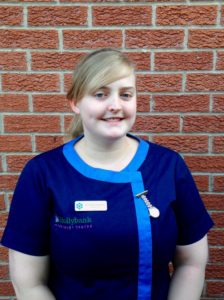 Dog walker – inpatient care includes taking dogs outside to the toilet; we treat each patient individually and take into consideration some dogs may need more or less opportunities to go out. We keep a record every time we do and what they do to make it easier to spot any abnormalities.
Dog walker – inpatient care includes taking dogs outside to the toilet; we treat each patient individually and take into consideration some dogs may need more or less opportunities to go out. We keep a record every time we do and what they do to make it easier to spot any abnormalities.
Emergency nurse – Hollybank is a 24 hour hospital so there is always a nurse on site ready to deal with any emergencies, from triage through to intensive nursing care that may be required.
Face to lick – getting to know our patients and creating bonds with them is really important to us, we know they will miss you so we want to make them feel safe with us.
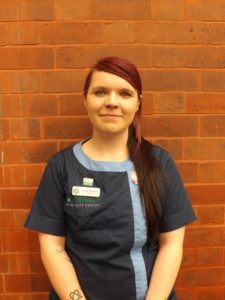 Groomer – we clip nails, dematt fur and keep our inpatients clean and comfortable.
Groomer – we clip nails, dematt fur and keep our inpatients clean and comfortable.
Hair magnet – it is impossible to do a shift at work without getting hair and other substances on us but it is important we have high standards of hygiene and we use personal protective equipment when necessary to protect ourselves and your pets.
Interpreter – nurses spend a lot of time with our inpatients, so getting to know them means we can spot even the subtlest changes which could mean they are in pain or unhappy.
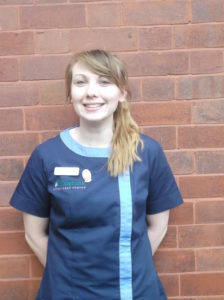 Joints physiotherapist – some patients may have undergone surgery or have a condition that requires physiotherapy which Leonie has an additional qualification in. We also take care to consider the needs of patients that may be older or arthritic even if that is not the reason they are in hospital.
Joints physiotherapist – some patients may have undergone surgery or have a condition that requires physiotherapy which Leonie has an additional qualification in. We also take care to consider the needs of patients that may be older or arthritic even if that is not the reason they are in hospital.
Kitty cuddler – sometimes some TLC can make all the difference to a patient’s recovery, although we do understand some animals don’t enjoy too many cuddles so we respect their space!
Lab technician – not only can nurses obtain samples, it is usually us who run the tests in-house or package them up to send off the external lab.
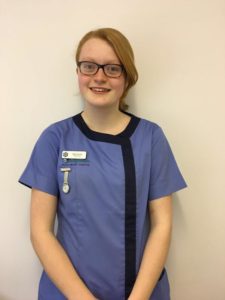 Midwife – it can be a special experience when we get to be involved in the birth of baby animals, whether it is assisting with a natural birth or a caesarean section. During a C-section the vet will be tied up with the surgery so we must monitor the mums’ anaesthetic and revive the babies as they come out! It is usually all hands on deck! However, when this happens during our emergency hours there may not be as many hands which is nurses need good multitasking skills!
Midwife – it can be a special experience when we get to be involved in the birth of baby animals, whether it is assisting with a natural birth or a caesarean section. During a C-section the vet will be tied up with the surgery so we must monitor the mums’ anaesthetic and revive the babies as they come out! It is usually all hands on deck! However, when this happens during our emergency hours there may not be as many hands which is nurses need good multitasking skills!
Nutritionist – nurses offer nutrition advice on types of food or feeding habits, we also run weight clinics for pets that need to lose weight, put weight on, or maintain their weight.
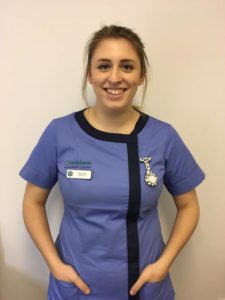 Oncology nurse – we see a number of patients having cancerous lumps removed and we also carry out chemotherapy if appropriate, nurses will assist the vet during the procedure and monitor your pet throughout.
Oncology nurse – we see a number of patients having cancerous lumps removed and we also carry out chemotherapy if appropriate, nurses will assist the vet during the procedure and monitor your pet throughout.
Phlebotomist – nurses are able to take blood samples and run the required tests, this can help to free up the vets busy schedule if they tell us what they need and we do the rest.
Qualified – all RVNs have carried out years of training and examinations to become qualified, this means they have all the required knowledge and can provide the uppermost care for your pets. Every RVN is awarded with their own Registered Veterinary Nurse badge which depicts St Francis, the patron saint of animals.
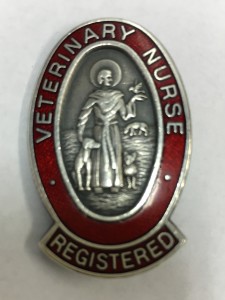 Rehabilitator – whether it is post surgery or recovering from a medical condition, nursing care is vital in restoring patients back to health.
Rehabilitator – whether it is post surgery or recovering from a medical condition, nursing care is vital in restoring patients back to health.
Steriliser – after every procedure it is the nurses’ job to take care of all the equipment, ensuring it is thoroughly cleaned, and sterilised if necessary.
Teacher – it is important as RVNs to pass on our knowledge and help SVNs, but also other members of our team and you the owners.
Unblock anal glands – nurses offer a variety of consultations, including emptying anal glands, post-operative checks, dental checks, nail trims, weight clubs, and puppy and kitten clubs.
Vet assistant – nurses assist and support the vets. This includes restraining patients, carrying out their prescribed care for each patient and monitoring anaesthetics, to cleaning up after them and being there for them in stressful or sad times.
Ward nurse – our wards can have a variety of patients from healthy patients just in for a routine procedure to critically ill patients, each one is individual and has their own needs and it is our job to ensure they all receive the care they need.
X-ray nurse – we can position patients and take x-rays ready for the vet to interpret them.
Yummy food feeder – some patients are reluctant to eat when they are in hospital with us, sometimes just because they are in a strange environment, or it could be linked to their condition. It is up to us to spend time with them finding out what they like and encouraging them to eat.
Zzzz…catching some Z’s after those busy shifts…day or night.
The Studies of a student veterinary nurse
There are two main routes to becoming a registered veterinary nurse: Going to college and getting a diploma or a University qualification.
Both routes have a lot of practical time in the form of placements at specific training practices such as here at Hollybank. They also have similar examination methods which include the Nursing Progress Log (NPL) and Objective Structured Clinical Examinations (OSCE’s). At the end of each route you emerge as a Registered Veterinary Nurse (RVN) and must keep your knowledge up to date by attending Continuing Professional Development (CPD) events. Before choosing which route, you want to go down, it’s important to look at the differences and understand which route may be best suited to you.
When doing an apprenticeship, you attend college once or twice a week depending on your course provider. This is a more vocational and hands on approach to achieving your qualification as more time is spent in the work place rather than in the classroom. For more information on a Veterinary Nursing apprenticeships please visit the UK government website for apprenticeships
There are two routes of gaining a Veterinary Nursing qualification from University, either a foundation degree or a BSc Honours degree. The two are very similar but differ in terms of modules that are studied and the length of the course. This approach is a lot more academic based and provides a closer link between yourself and your educator. For more information please visit the Universities and Colleges Admissions Service (UCAS)
Before embarking on becoming a student nurse however, it is important to understand what you are singing up for. Prior to going to university, a set amount of work experience may be required, such as in a veterinary practice or other animal based businesses like farms or zoos. It’s important that you’re aware of this as universities will have different entry requirements.
It is an intense job that requires an immense amount of dedication, and that’s before you’re even qualified! To become registered, you have to complete the NPL which consists of 371 ‘day one’ tasks These are tasks you have to feel competent at completing on a day to day basis; they include include things such as aiding the capture of x-rays, handling emergency care, monitoring anaesthetics and even restraining a selection of different species of animals ranging from a cat to birds and reptiles. You must also pass a select range of OSCE’s; these are 6 minute practical examinations which must be carried out alongside any theory work set out by the course provider.
Claire
 I am studying the BSc Veterinary Nursing and Practice management course at Harper Adams University and I am currently completing my placement year here at Hollybank. I feel like the Honours degree was more suited to me as I wanted the whole university experience of moving away and living on campus. I also prefer to have more theory based knowledge before going into practice and dealing with real life cases.
I am studying the BSc Veterinary Nursing and Practice management course at Harper Adams University and I am currently completing my placement year here at Hollybank. I feel like the Honours degree was more suited to me as I wanted the whole university experience of moving away and living on campus. I also prefer to have more theory based knowledge before going into practice and dealing with real life cases.
Moving to Harper was a big change for me as moving from a big city like Manchester, to the rural area of Shropshire was quite a big difference. I have always grown up with animals and knew since watching Animal Park on the TV and playing with my Animal Hospital toys that a career with animals was always the route for me. Later on in my career I’d like to be able to become a zoo veterinary nurse working alongside a range of rare and wild animals.
Katie
 Growing up on a farm I’ve always loved animals and getting involved, so doing a degree that combined both animals with placement was very important to me. After a suggestion from a tutor I instantly knew what I wanted to do and ever since I’ve strived towards getting to Harper Adams to complete a BSc Honours Veterinary Nursing and Practice Management degree. Luckily I achieved my goal and am currently carrying out my placement year here at Hollybank.
Growing up on a farm I’ve always loved animals and getting involved, so doing a degree that combined both animals with placement was very important to me. After a suggestion from a tutor I instantly knew what I wanted to do and ever since I’ve strived towards getting to Harper Adams to complete a BSc Honours Veterinary Nursing and Practice Management degree. Luckily I achieved my goal and am currently carrying out my placement year here at Hollybank.
University was the right choice for me as I also enjoy learning the theory as much as the practical elements. Moving out of my small village to Harper also boosted my confidence and gave me my independence. There were many great universities that also offered Veterinary Nursing and had their own take on how to complete the course, however the support from staff and the focus on farm animals as well as companion animals drew me to Harper.
How our nurse’s can help you; puppy clubs and much more!
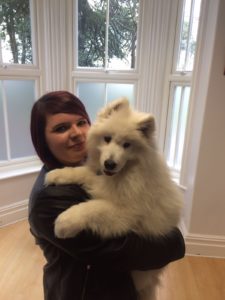 Owning your own puppy is a very rewarding experience but it takes a lot of time and patience to raise them into a young well-mannered dog. I have the pleasure of owning a beautiful five month old Samoyed named Iggy. Samoyed’s, commonly known as Sammy’s originated from Northwest Russia and Western Siberia and are a member of the Spitz group of canines. They were originally bred to help herd reindeer and pull sleds. They are a large breed of dog with a thick white double layered coat and upwards curling lips to show off that lovely ‘Sammie Smile’.
Owning your own puppy is a very rewarding experience but it takes a lot of time and patience to raise them into a young well-mannered dog. I have the pleasure of owning a beautiful five month old Samoyed named Iggy. Samoyed’s, commonly known as Sammy’s originated from Northwest Russia and Western Siberia and are a member of the Spitz group of canines. They were originally bred to help herd reindeer and pull sleds. They are a large breed of dog with a thick white double layered coat and upwards curling lips to show off that lovely ‘Sammie Smile’.
Sammy’s have a friendly and playful temperament with a lot of energy requiring lots of enrichment and exercise to keep them happy, they even stay playful with old age! Sammy’s are known to be excellent companions especially with children making them the perfect family pet.
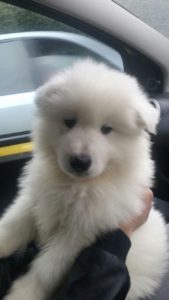 My partner and I had been thinking about getting our own puppy for a couple of years and had researched the breed well before looking for breeders. We chose Iggy when he was 4 weeks old, he was the largest of his litter and the first born, he loves to eat! Being a veterinary nurse I advise clients on how to care for and train their new family members everyday so I expected my little man to fly through his training and follow the gold standard approach that I recommend- how wrong I was!
My partner and I had been thinking about getting our own puppy for a couple of years and had researched the breed well before looking for breeders. We chose Iggy when he was 4 weeks old, he was the largest of his litter and the first born, he loves to eat! Being a veterinary nurse I advise clients on how to care for and train their new family members everyday so I expected my little man to fly through his training and follow the gold standard approach that I recommend- how wrong I was!
The fun (and stress!) began when we brought him home at eight weeks old. He settled into his new home straight away and began to show his very cheeky personality! Sammy’s as a breed are very intelligent however and with lots of time and hard work within the first week Iggy had learned his name, sit, paw, high five, lie down and was toilet trained. My partner couldn’t believe it!
The key to training is positive reinforcement and lots and lots of praise! Your new puppy will no doubt be very excited to be in their new environment and will not understand straight away what is expected of them when it comes to toileting, playing, feeding and socialisation. This makes it up to us to help them understand by giving clear repetitive instructions and a juicy treat when they have done something right. Negative reinforcement, so shouting at or smacking your puppy when they have done something wrong is never a good way of training. Firstly, your puppy will not understand what they have done wrong (remember they learn by association, not the English language!) and secondly it could lead to nervousness and fear aggression.
So, here are my tips on training your new pup…
Toilet Training: Toilet training can sometimes feel like you are fighting a losing battle but persistence is the key. As puppies cannot hold their bladder for as long as an adult dog can, taking them outside to toilet every 2 hours is often helpful when first training. Sometimes it can help to make one area of the garden the toileting area, so they know when they go to this area you are expecting them to go to the toilet. Ensure you are on standby with the juicy treat and a high pitched ‘good boy/girl’ after they do their business in the desired place and then repeat, repeat, repeat! It’s not unusual for puppies to still have the odd accident in the house even if they are doing well with their training, but it’s important not to let minor setbacks disrupt your training plan. Some puppies, Iggy being one of them will urinate when they become excited. This is something they should grow out of as time goes on…hopefully for Iggy!
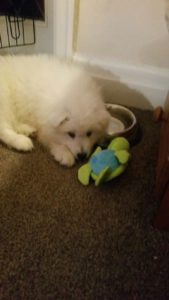 Mouthing/teething: When puppies play with their litter mates they mouth, nip and play bite. When you get your new puppy home they will begin to use this trait to play and socialise with you. As an 8 week old puppy this won’t hurt so much but when they become older they can do a lot of damage. With Iggy being five months old and growing so fast I have to keep reminding him that it hurts us when he mouths by making a high pitched ‘ow’. Teaching your puppy that mouthing, nipping or biting actually stops the play is the best way to kick this habit. Once your puppy begins to mouth simply get up and leave the room for a short period of time and then return and resume play and attention. Keep repeating this and they will learn they do not get attention if they bite. It’s important that everyone in the family and friends also stick to this rule otherwise all your hard work is being undone. Your puppy will also be teething and want to chew things, make sure they have plenty of toys to keep them entertained and their chewing under control.
Mouthing/teething: When puppies play with their litter mates they mouth, nip and play bite. When you get your new puppy home they will begin to use this trait to play and socialise with you. As an 8 week old puppy this won’t hurt so much but when they become older they can do a lot of damage. With Iggy being five months old and growing so fast I have to keep reminding him that it hurts us when he mouths by making a high pitched ‘ow’. Teaching your puppy that mouthing, nipping or biting actually stops the play is the best way to kick this habit. Once your puppy begins to mouth simply get up and leave the room for a short period of time and then return and resume play and attention. Keep repeating this and they will learn they do not get attention if they bite. It’s important that everyone in the family and friends also stick to this rule otherwise all your hard work is being undone. Your puppy will also be teething and want to chew things, make sure they have plenty of toys to keep them entertained and their chewing under control.
Diet: It is important for your puppy to have a healthy diet to help them grow and maintain their ideal weight. Dry food benefits their teeth more than wet food, so a good brand dry food is what I would recommend. However, I now know what it’s like to have a fussy dog, Iggy will only eat certain brand wet trays. He doesn’t even like dry food in gravy! However, as long as you are feeding a complete puppy diet your puppy will be getting all the nutrients they need to become a healthy young dog. As your puppy gets older it’s important to gradually change them onto a young adult dog food. Every bag or tin of food should have a weight chart on the packaging so you can work out exactly how much your puppy needs to be fed daily. If you are unsure you can always pop your puppy in to be weighed and bring the packaging along for one of us nurses to work it out for you. Giving your dog human food can be bad for their health, it will cause them to gain weight and will not hold the correct nutrients for your dog. There are also a lot of human foods that are toxic to dogs such as chocolate, onions, garlic and grapes. It’s also important all members of the family stick to the rule of not giving human leftovers to your puppy, Iggy was given my boyfriend’s leftover pizza crusts and refused to eat his own food all day!
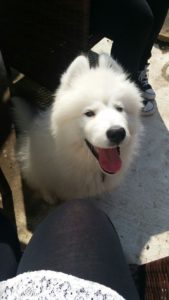 Socialisation: Socialising your puppy as early as possible allows them to become used to their surroundings, new people, new situations and other animals. I would recommend socialising them as soon as they are covered by their vaccinations. At this point they are eager to go outside and explore the world! Allowing them to experience as many new things as possible, as young as possible is the best way to get your puppy used to the big wide world. Each puppy will have their own personality, some will be shy, some excitable and others a mixture but with each experience they will learn how to behave appropriately in social and public situations. Iggy has learned how to behave with dogs through his own experiences; some dogs will play with him for hours whereas some realise he has far too much puppy energy for them. As Iggy is sometimes not aware of how big and boisterous he can be he gets the occasional telling off by the smaller and older dogs on the park, but again this is something he must learn therefore socialising at a young age is critical for them to learn these behaviours.
Socialisation: Socialising your puppy as early as possible allows them to become used to their surroundings, new people, new situations and other animals. I would recommend socialising them as soon as they are covered by their vaccinations. At this point they are eager to go outside and explore the world! Allowing them to experience as many new things as possible, as young as possible is the best way to get your puppy used to the big wide world. Each puppy will have their own personality, some will be shy, some excitable and others a mixture but with each experience they will learn how to behave appropriately in social and public situations. Iggy has learned how to behave with dogs through his own experiences; some dogs will play with him for hours whereas some realise he has far too much puppy energy for them. As Iggy is sometimes not aware of how big and boisterous he can be he gets the occasional telling off by the smaller and older dogs on the park, but again this is something he must learn therefore socialising at a young age is critical for them to learn these behaviours.
Vaccinations: It is important to vaccinate against common canine diseases which can be potentially life threatening. Dogs are routinely vaccinated against Parvo virus, Distemper virus, Hepatitis and Leptospirosis . Puppies can be vaccinated from 6 weeks of age, they will then require a second vaccination 4 weeks later and are able to go out and explore the world one week after this. Your puppy will then need yearly booster vaccinations to keep their antibody levels up.
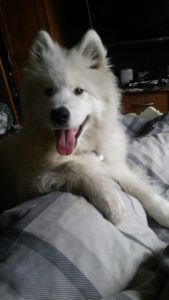 Microchipping: It is now a legal requirement to have your puppy microchipped and registered to you by 8 weeks of age. The microchip is a very small chip that’s placed in between your puppy’s shoulder blades so they can be identified and reunited with you if they become lost. It is placed under the skin by a quick injection and your puppy will forget all about it in seconds.
Microchipping: It is now a legal requirement to have your puppy microchipped and registered to you by 8 weeks of age. The microchip is a very small chip that’s placed in between your puppy’s shoulder blades so they can be identified and reunited with you if they become lost. It is placed under the skin by a quick injection and your puppy will forget all about it in seconds.
Preventative Parasite Control: Keeping up to date with flea and worm treatment will help keep those pesky parasites away from your puppy. We recommend puppies are wormed once a month until they are six months old and then every 3 months. Flea treatment will depend on the product being used, they are usually monthly pipettes however longer acting formulations are now available too!
Neutering: When your puppy is old enough (5-6 months old) neutering is recommended. There are many health benefits to neutering your dog. Please see our ‘What to expect when you bitch or dog is neutered’ advice to learn what each of these proecdures involves. Afterwards they will be recovered in our warm incubator or heated floors, have a fuss and cuddle with the nurses before going home the same day. They will require strict rest and a ‘cone of shame’ for 5 days at which point they will come back for a post-op check with one of us. All being well they can then return to their normal activity. Iggy is yet to be castrated but his time is coming up!
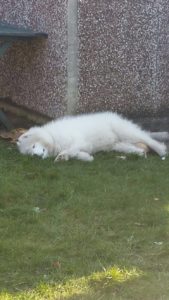 As nurses we all have our own personal and professional experiences and we can use these to help guide you and your puppy through life. We are there to help right at the beginning of your journey and throughout. We also help in lots of other areas such as weight management, dental care and post operative care. We are always here and more than happy to offer our advice so don’t hesitate to book a nurse consultation if you are in need of a little help.
As nurses we all have our own personal and professional experiences and we can use these to help guide you and your puppy through life. We are there to help right at the beginning of your journey and throughout. We also help in lots of other areas such as weight management, dental care and post operative care. We are always here and more than happy to offer our advice so don’t hesitate to book a nurse consultation if you are in need of a little help.
Life in the day of a veterinary nurse and a veterinary nurses naughty dog!
Being a veterinary nurse is very rewarding and the wide range of tasks we can perform keep the job varied and interesting. We can perform a large variety of tasks, not just holding animals or cuddling puppies, although we never say no to puppy cuddles! We treat the patients as our own pets, and it’s nice to know that if your pet is poorly there is someone looking after them that has their best interests in mind.
I was recently on the other side of the consulting room table with my own dog, Homer, who decided to help himself to some raisins, which can cause serious problems for dogs. We had to give him a drug to make him vomit, to reduce the probability of the raisins causing an issue. We provide animals with lots of reassurance whilst they are being sick, and of course clean them up afterwards. We also get the not so glamorous job of checking that the raisins or other offending item have been brought up, which involves a pair of gloves and a strong stomach!
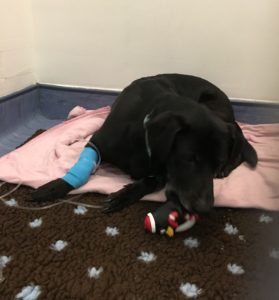 To reduce the potential damage to the kidneys, we often use intravenous fluids (drip) to support our patients and flush any toxins out of the body via the kidneys. To do this a patient needs an intravenous catheter, which is a needle inserted directly into the vein. Nurses regularly place these catheters, and strict hygiene must be adhered to, to prevent infectious agents such as bacteria from entering the bloodstream. The area must be carefully cleaned before the catheter is placed, and a clean bandage used to prevent the cat or dog from interfering with it. Animals’ mouths are full of bacteria, so the last thing we want is for them to lick the catheter site.
To reduce the potential damage to the kidneys, we often use intravenous fluids (drip) to support our patients and flush any toxins out of the body via the kidneys. To do this a patient needs an intravenous catheter, which is a needle inserted directly into the vein. Nurses regularly place these catheters, and strict hygiene must be adhered to, to prevent infectious agents such as bacteria from entering the bloodstream. The area must be carefully cleaned before the catheter is placed, and a clean bandage used to prevent the cat or dog from interfering with it. Animals’ mouths are full of bacteria, so the last thing we want is for them to lick the catheter site.
Most of our patients tolerate their catheters well, but a few naughty ones, like Homer, decide to remove it themselves! In this case, a new catheter is placed, and they get a buster collar, or ‘cone of shame’ for their troubles! Nurses monitor patients carefully during fluid administration, regularly checking their heart rate, temperature and breathing rate, as well as their overall demeanour. Subtle changes in these can indicate complications so need to be picked up straight away.
In addition to fluids and dependent on the type of toxin we will also administer activated charcoal. This is usually in the form of a thick black liquid, which must be taken by mouth. It acts to limit the absorption of such toxins from the intestines and hopefully reduce their potential for toxicity elsewhere in the body. Being half-Labrador, and very greedy, this was no problem for Homer, who willingly took the charcoal in a bowl of food! Sometimes the charcoal needs to be syringed into the patients mouth, which is a very messy process, as they often don’t like the taste!
 Some of our inpatients will also require other types of medication during their stay, which is the responsibility of our veterinary nurses to administer. Tablets, liquids and injections are common administration methods, all of which we are able to give. Nurses generally have a few tricks to help convince their patients to swallow their medicine! We often hide medication in some tasty food, or sometimes need to put the tablet down the animals’ throat and encourage them to swallow.
Some of our inpatients will also require other types of medication during their stay, which is the responsibility of our veterinary nurses to administer. Tablets, liquids and injections are common administration methods, all of which we are able to give. Nurses generally have a few tricks to help convince their patients to swallow their medicine! We often hide medication in some tasty food, or sometimes need to put the tablet down the animals’ throat and encourage them to swallow.
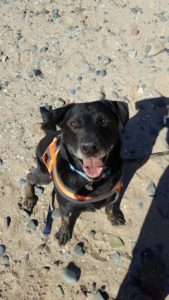 With an animal that has eaten something potentially harmful, we often have to run blood tests to identify any problems that are not apparent on a physical exam. As nurses, we can take blood samples from your pet and either run them on our machines in-house, or send them out to an external laboratory dependent on what tests are required. To do this, we clip a small patch of fur from their neck, over the jugular vein, clean the area and then use a needle and syringe to collect the blood from the vein. Most of our patients tolerate this very well, and get a cuddle and fuss from one of the other nurses to distract them whilst the sample is taken. Nurses are trained to use the machines to perform a large variety of tests, then report the results to the vet in charge of the patient.
With an animal that has eaten something potentially harmful, we often have to run blood tests to identify any problems that are not apparent on a physical exam. As nurses, we can take blood samples from your pet and either run them on our machines in-house, or send them out to an external laboratory dependent on what tests are required. To do this, we clip a small patch of fur from their neck, over the jugular vein, clean the area and then use a needle and syringe to collect the blood from the vein. Most of our patients tolerate this very well, and get a cuddle and fuss from one of the other nurses to distract them whilst the sample is taken. Nurses are trained to use the machines to perform a large variety of tests, then report the results to the vet in charge of the patient.
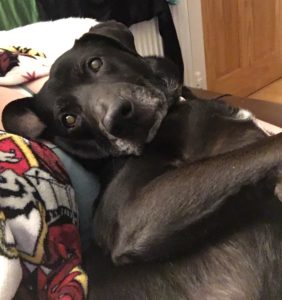 Overall, Homer stayed in the practice for a few nights, where he was monitored throughout the night by the nurse who was on-call. Homers initial blood sample showed no ill effects from the raisins but sometimes this can take a couple of days to develop. He was able to go home after 48 hours of fluids, where he was glad to be back doing what he loves, lying on his back on the sofa all day! He returned for a repeat blood sample a week later, he was very good for this and the bloods showed no long lasting effects from eating the raisins-good news for us both!
Overall, Homer stayed in the practice for a few nights, where he was monitored throughout the night by the nurse who was on-call. Homers initial blood sample showed no ill effects from the raisins but sometimes this can take a couple of days to develop. He was able to go home after 48 hours of fluids, where he was glad to be back doing what he loves, lying on his back on the sofa all day! He returned for a repeat blood sample a week later, he was very good for this and the bloods showed no long lasting effects from eating the raisins-good news for us both!
Having Homer in the hospital was of course worrying to me but remembering that we too are pet owners and experience the same concerns as our clients is a helpful experience; we really understand what you are going through and can be confident when we say ‘we treat your pets exactly as we would treat our own.’
Further qualifications and continuing professional development
Why do veterinary nurses continue learning?
All veterinary nurses are obliged to maintain and continue to develop their professional knowledge and skills to maintain on the register of veterinary nurses held by the Royal College of Veterinary Surgeons. Continuing Professional Development (CPD) is therefore mandatory for all registered veterinary nurses and is the continuous progression of capability and competence.
The required minimum CPD is 45 hours in any three-year period with an average of 15 hours per year. Although most veterinary nurses will do more than this. Veterinary nurses must record their CPD and recording online allows them to record and reflect on their professional development plans and objectives.
What counts as CPD?
Most activities you undertaken in order to further professional competence as part of a planned development programme can be counted towards CPD hours.
The variety of activities that veterinary nurses can use for their CPD includes:
- Attending organised courses, lectures or seminars
- Shadowing someone or being mentored in practice
- Participating in ‘learning sets’ – informal networks of colleagues who learn together, for example, by comparing and discussing case reports
- In-house training
- Critical reading of veterinary journals and other relevant publications – keeping a reading diary/notes
- Research, including research in preparation for giving lectures/seminars/presentations
All of the veterinary nurses at Hollybank have different interests within nursing and make sure they attend courses, read journals and are active in learning that is relevant to their individual area of interest.
Further qualifications
As you may be aware our senior vet Helen has recently completed her certificate in emergency and critical care. These types of further qualification are also available to veterinary nurses.
 Our head nurse Cat is currently studying towards the modular Diploma in Advanced Veterinary Nursing (DipAVN) with Harper Adams University.
Our head nurse Cat is currently studying towards the modular Diploma in Advanced Veterinary Nursing (DipAVN) with Harper Adams University.
This qualification is aimed at veterinary nurses who are already qualified and have worked in veterinary practice for at least a year since qualification, but want to advance and develop their skills. The course is designed to be flexible, allowing candidates to study at their own pace and choose clinical modules to reflect their interests.
The Diploma framework includes both “core” and “option” modules. The core modules are designed to develop understanding of professional veterinary nursing issues. They also provide veterinary nurses with skills for lifelong learning so that they will be able to carry on with effective professional development long after they have completed the Diploma. These include medical and surgical nursing, intensive care, diagnostic imaging, anaesthetic nursing and more.
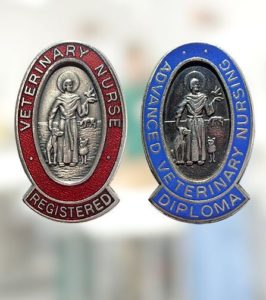 Cat started her course in January and is currently studying two modules, Evidence Based Nursing and Applied Physiology.
Cat started her course in January and is currently studying two modules, Evidence Based Nursing and Applied Physiology.
The Evidence Based Nursing module encourages students to develop transferable research skills, including analysis, problem-solving, and communication. These skills will aid the student to gain an appreciation of research and the ability to access information from a variety of sources. Students will acquire the skills to be able to evaluate literature and to apply relevant and valid research to their clinical practice. This module is assessed by an oral presentation exam and a written report evaluating the evidence base for an area of interest within clinical practice.
The Applied Physiology module aims to provide an integrated review of the anatomy and physiology which are fundamental to the understanding of the biological processes occurring in small animals. This module will provide the scientific basis for understanding disease processes and disease recognition and in appreciating the effects of drugs, including anaesthetics, on the animal’s physiology. This module is assessed by a written exam and a report examining a medical condition, the changes to normal physiology that occur and the patients nursing requirements.
Cat has passed her first exam and finished her first report, she has lots more work to get through but is enjoying the course so far and looking forward to be awarded her Blue badge!



